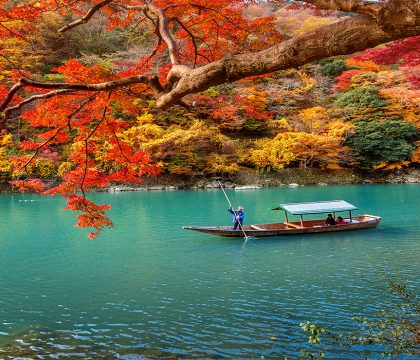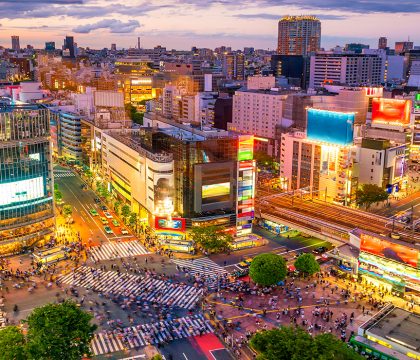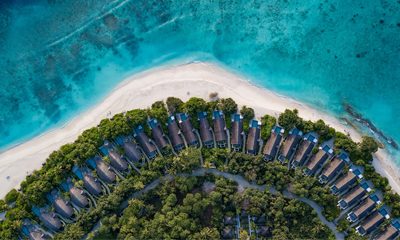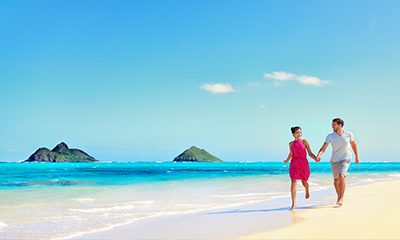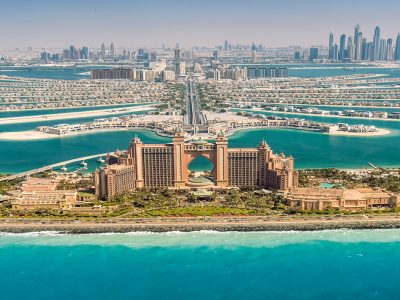OVERVIEW
A destination that bubbles with vibrant cityscapes, ancient temples, beaches, lakes and mountains – Japan’s reputation as a world-class honeymoon destination is gathering pace.
At a time when multi-moons are all the rage, the land of the Rising Sun offers something unique: an easily navigable archipelago with diverse terrain and climate, distinctive regions brimming with their own cultures and a modern, quick and reliable transport network that can zip you between Japan’s dramatic scenery and must-see sites. A tour through Japan’s different regions will leave you feeling as though you’ve scaled several nations – without the hassle of having to change currency or language.
Be transported to the past via pristine, peaceful Zen gardens, and a seemingly endless trail of castles, shrines and temples. Then re-emerge from your pilgrimage into dazzling mega-cities with game-changing gastronomic scenes, innovative architecture and exciting nightlife.
Japan honeymoon tours and packages
With so much to see and do, from ski resorts boasting powder-soft snow to tropical islands and cities that reflect the changing seasons, Japan is the ideal destination for tours and multi-centre honeymoon packages.
Can’t choose between an exciting city break, relaxing lakeside spa experience, laid-back beach honeymoon or a romantic ski trip? You may be able to enjoy a little of everything in one destination. Explore our Japan honeymoon packages to find out more about tailoring a bespoke honeymoon to begin married life on an exciting adventure.
Hokkaidō
If you’re a couple of thrill-seekers, Hokkaidō fits the bill thanks to its volcanoes, rugged and unspoiled national parks, lavender farms, crystal clear lakes and an abundance of high-quality ski resorts with powder-like snow. It’s ideal for nature lovers, wildlife spotters and winter sports enthusiasts, but you can also take in the cool capital, Sapporo – famous for its beer, ramen and snow festival – or warm up together in a steaming hot spring. On a clear day, you might even be able to catch a glimpse of the nearby Russian islands.
Tōhoku
To get off the beaten track, loved up travellers can head to Tōhoku, which stretches across the northeastern part of Honshu – Japan’s largest island. Easy to reach from both Tokyo and Hokkaido, it’s a ski-lover’s paradise but, as well as a winter wonderland, there’s colourful summer festivals, largely untamed countryside, primeval forests and historic sites such as Hiraizumi, an ancient city littered with temples and ruins.
Kantō
Japan’s most famous region, Kantō is home to the sprawling and futuristic metropolis that is the Greater Tokyo Area. Flit between the brilliant neon cities of Tokyo and Yokohama in under an hour and enjoy craft beer, Michelin-starred restaurants, chic shopping areas, vibrant districts abuzz with jazz clubs, games arcades and karaoke bars, all alongside museums, contemporary architecture, temples and shrines.
You’ll be spoilt with honeymoon photo opportunities if you stop at the towering Tokyo Skytree for panoramic city views, take in the sights and smells of the multitude of markets, attend a day of sumo wrestling or step into another world at a teamLab immersive digital art display. But despite the development, Kantō offers its own scenery too – with plenty of hiking spots and Kamakura providing a slice of laid-back Japanese beach life.
Chūbu
Some of Japan’s biggest hitters are situated in Chūbu, which sits at the heart of Honshu. Many visitors use Tokyo as a base to explore this region’s top attractions in a day or a weekend – but there’s so much to enjoy that newlyweds will benefit from venturing further. This region is, first and foremost, home to the iconic Mount Fuji and Fuji Five Lakes. Fuji-san is notoriously shy, so don’t rush your trip as you may miss the best of this spectacular volcano on a cloudy day. Head to an onsen hotel somewhere in scenic Hakone, along the stunning Lake Ashi, and relax together in an onsen, while waiting patiently for the chance to glimpse Japan’s most famous attraction.
This region also encompasses the Japanese Alps and Nagano, which offers shrines and hiking aplenty as well as a ninja museum, plus Yamanouchi’s famous hot spring bathing monkeys.
Kansai
For the perfect blend of old meets new, any Japan tour worth its salt will take you on extensive sightseeing around Kansai, which claims Kyoto, Kobe, Osaka, Nara and Himeji as its own. For a taste of Japan’s feudal history, you can view the 17th century Himeji Castle, perched high above scenic grounds, while feeding the roaming deer at the picturesque Nara Park is another bucket list must.
Osaka, with its bright city lights and street food, and Kyoto – peppered with bamboo forests, tranquil gardens, tea houses, river cruises, and endless shrines and temples – need no introduction. Although, we’d recommend visiting in spring’s almost unreal cherry blossom season for the full benefit of Kyoto’s carefully curated green spaces, traditional buildings, waterfront walks and cultural activities such as spring geisha dances.
Chūgoku
Take the road less traveled together in Chūgoku and see some of rural Japan at its best. Located in western Honshu, this region is stuffed full of hidden gems – from the Tottori sand dunes, Hagi’s Wolrd Heritage sites and Akiyoshido’s limestone caves, to the quaint canal town of Kurashiki.
That is, of course, all before we get to the jewel in the crown – the prefecture and city of Hiroshima. Usually the last stop on the commonly trod tourist trail, this friendly city has a haunting history you can pay your respects to via the Atomic Bomb Dome and Hiroshima Peace Museum/Park, but also plenty to recommend it for a romantic break including Miyajima, a lush island with a famous floating red torii gate and a ropeway that will give you memorable views of the lush Mt Misen. You can also begin your exploration of some of the Seto Inland Sea’s islands in the cat-loving city of Onomichi, where you’ll rent a bicycle to help you traverse the Shimanami Kaido – a 60 kilometre toll road that connects Honshu to Shikoku.
Shikoku
Stop and take in the panoramic scenery as you cycle the Shimanami Kaido together on a tandem bicycle and finish up the trail in Imabari on Shikoku, Japan’s smallest major island. It’s best known for its 88-temple pilgrimage route, which is now a popular walking trail, as well as the whirlpools of Naruto and the remote and dramatic Iya Valley – parts of which you have to traverse via vine bridges that hang over gorges and rivers. While here, couples can also continue to island hop across the Seto Inland Sea, where olives and citrus grow in the Mediterranean-like climate, with Naoshima top of the list if you like eye-catching modern art.
Kyushu and Okinawa
Japan’s southernmost islands stand out for their subtropical climate, making them a great spot for honeymooners that want to combine culture and history with some more typical beach time. From Beppu’s hot springs to the Ibusuki sand baths and funky, urban Fukuoka, there’s something for everyone. Nagasaki is one of Kyushu’s largest cities, and a great base to explore the region from, while soaking up the sun and digging into shaved ice desserts. A stop at the Peace Park is a must to understand the city’s past but it’s also chock full of trams, fascinating trade and colonial history, as well as one of the world’s most romantic nighttime views from Mt Inasa.
Just off from Kyushu, honeymooners can choose from a number of exotic island escapes: there’s the waterfalls, turtle watching and ancient cedar forests of Yakushima; snorkelling, scuba diving and sunbathing galore in the Okinawa Islands; and the relative unspoilt tropical beauty and white sand beaches of the Miyako Islands and Yaeyama Islands, Japan’s very own ‘Caribbean’.
What currency do you need in Japan?
The Japanese yen.
How long does it take to fly to Japan from the UK?
A direct flight from London to Tokyo usually takes around 11 to 12 hours.
Do UK citizens need a visa for Japan?
Good news – if you have a ‘British Citizen’ or ‘British National (Overseas) passport, you can enter and stay in Japan for up to 90 days without a visa. For up-to-date requirements when travelling to Japan visit the official FCO website here.
When is the best time to visit Japan?
Spring (between March and May) is the most popular time to visit Japan due to mild and pleasant temperatures and the famous cherry blossom season. Autumn (between September and November) is also a popular time to visit thanks to mild weather and the chance to view the autumn foliage. Summer (June to August) generally brings humidity, heat and greater rainfall. Winter takes place between December and February.


